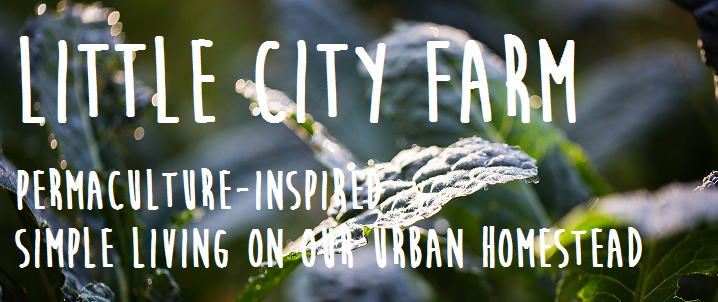Last weekend we had a second installment of our Spring Wild Edibles Foraging class here. Holding this several weeks after the first session (on the same topic) was really interesting as we could see a vast change in the plants available, the new growth that has sprung up rapidly from all the warm sun we've been having. What were just hints of leaves and buds a few weeks ago, were now fully formed flowers, leaves and perfectly sized young roots for harvesting. Some wild spring plants we discussed in the class, such as fiddleheads and ramps (wild garlic), were already past their prime by now as they really only have a tiny window of the ideal harvesting time. Fiddleheads literally become inedible when they are too big as they move into becoming ferns, and can make us quite sick.
So, in this workshop it was stressed by our facilitator that it's not only having excellent plant identification skills (and remembering there are many look-alikes to be aware of), but also knowing how and when the timing is right to harvest, how much to harvest (and what not to harvest at all, tempting as it can be, because it's at risk of being over harvested - like wild ginger and ramps in some of our woodlands). Then of course it's important to know how to prepare the wild plant. For example, can it be eaten fresh or does it need to be cooked in several changes of water? What parts can be eaten (roots, leaves, buds, flowers, bark, shoots)? Can it be fermented or dried to be preserved for later?
Plants that are edible and all around us right now - in this spring workshop we enjoyed nettles (leaves - in tea or cooked into sauces, steamed), dandelion (flowers in salads and baking, leaves in salads, roots in tea or stir-fried), dock (roots in stir-fry), cedar tips, pine tips and spruce buds (now will be past their prime, but can be made into drinks and brews, or nibbled cautiously), wild grape (leaves to be eaten as stuffed grape leaves, tendrils to be eaten fresh, and soon grapes to be eaten or made into jelly), wood sorrel (leaves that taste like lemon added into salad), purslane (leaves into salads), wild strawberries, violets, lamb's quarters, red clover....
Please get yourself a great foraging book to ID plants before getting started - the Newcombe's Guide, or Peteron's Guide, or Lone Pine Guides, are all great plant identification resources -- or best of all, start by foraging with another knowledgeable person to learn side-by-side before you venture out on your own.
For those interested in this topic - we'll be having a Fall Wild Edibles class here at Little City Farm on Sept 19. More details on our website - please sign up and come to join us!
Happy foraging!








No comments:
Post a Comment